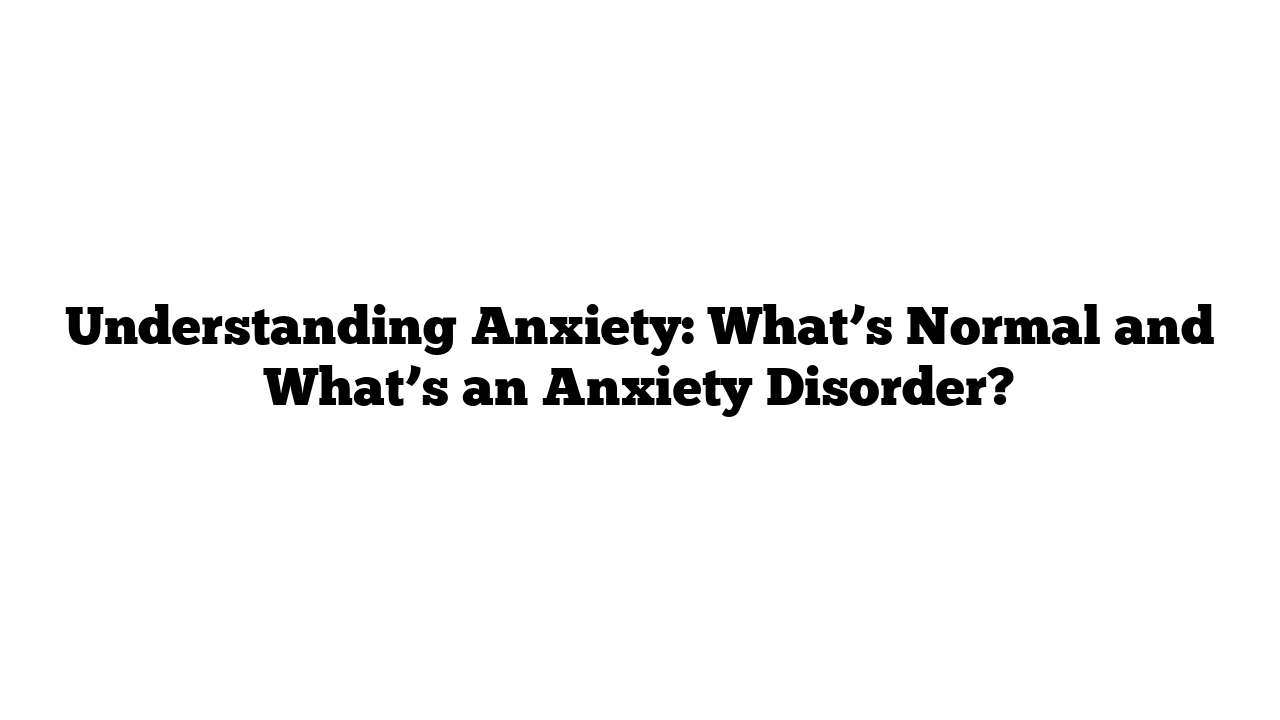The Stigma of Mental Health
In today’s society, mental health issues often don’t receive the attention they deserve. Many people are told to “just get over it” or that their worries are “all in their head.” However, anxiety disorders are just as real and significant as physical conditions like diabetes.
What is Anxiety?
Anxiety is a normal emotional response to stress. It is linked to fear, but while fear arises from an immediate threat and tends to fade quickly, anxiety is a reaction to more uncertain dangers that can linger for a long time. Our brains are wired to detect threats through a process that helps protect us from harm.
The Science Behind Anxiety
Anxiety begins in the amygdala, a small area of the brain that acts like an alarm system, alerting us to danger. When the amygdala senses a threat, it signals the hypothalamus, which triggers the body’s stress response. This causes our muscles to tense, our heart rate and breathing to increase, and our blood pressure to rise. This is known as the fight-or-flight response.
However, our brains also have mechanisms to calm this response. The ventromedial prefrontal cortex acts like a regulator, sending messages to the amygdala to help us calm down when we’re safe. The hippocampus provides context based on past experiences, reminding us that certain fears may not be valid.
When Anxiety Becomes a Disorder
For some people, these threat-detection systems malfunction, leading to persistent anxiety that disrupts daily life, including work and relationships. Individuals with anxiety disorders may avoid situations that trigger their symptoms.
Research shows that anxiety disorders are not uncommon; about 16% of people will experience an anxiety disorder at some point in their lives. These include:
- Social Anxiety Disorder: Intense fear of social situations.
- Panic Disorder: Sudden and repeated attacks of fear.
- Agoraphobia: Fear of being in situations where escape might be difficult.
- Phobias: Excessive fear of specific objects or situations.
Studies have indicated that individuals with anxiety disorders may have different brain functioning, including stronger pathways that signal anxiety. This creates a cycle where increased anxiety leads to even stronger pathways.
Treatment Options for Anxiety
The good news is that anxiety disorders are treatable, and suffering is not necessary. Here are some strategies that can help:
- Lifestyle Changes:
- Balanced Diet: Nourish your body with healthy foods.
- Regular Exercise: Physical activity can significantly reduce anxiety.
- Sleep Hygiene: Prioritize getting enough rest.
- Mindfulness and Meditation:
- Mindfulness techniques can help calm the mind and slow the fight-or-flight response.
- Cognitive Behavioral Therapy (CBT):
- This form of talk therapy helps identify and challenge upsetting thoughts, ultimately reshaping those thoughts and reducing anxiety over time.
- Medication:
- Anti-anxiety medications can help regulate the brain’s threat detection systems. Both short-term and long-term medication options can effectively reduce anxiety.
Moving Forward
Just like high blood pressure and diabetes, anxiety disorders can be treated and managed. If you or someone you know is struggling with anxiety, remember: seeking help is a sign of strength, not weakness. With the right support, it is possible to change the patterns in your brain and lead a fulfilling life.
